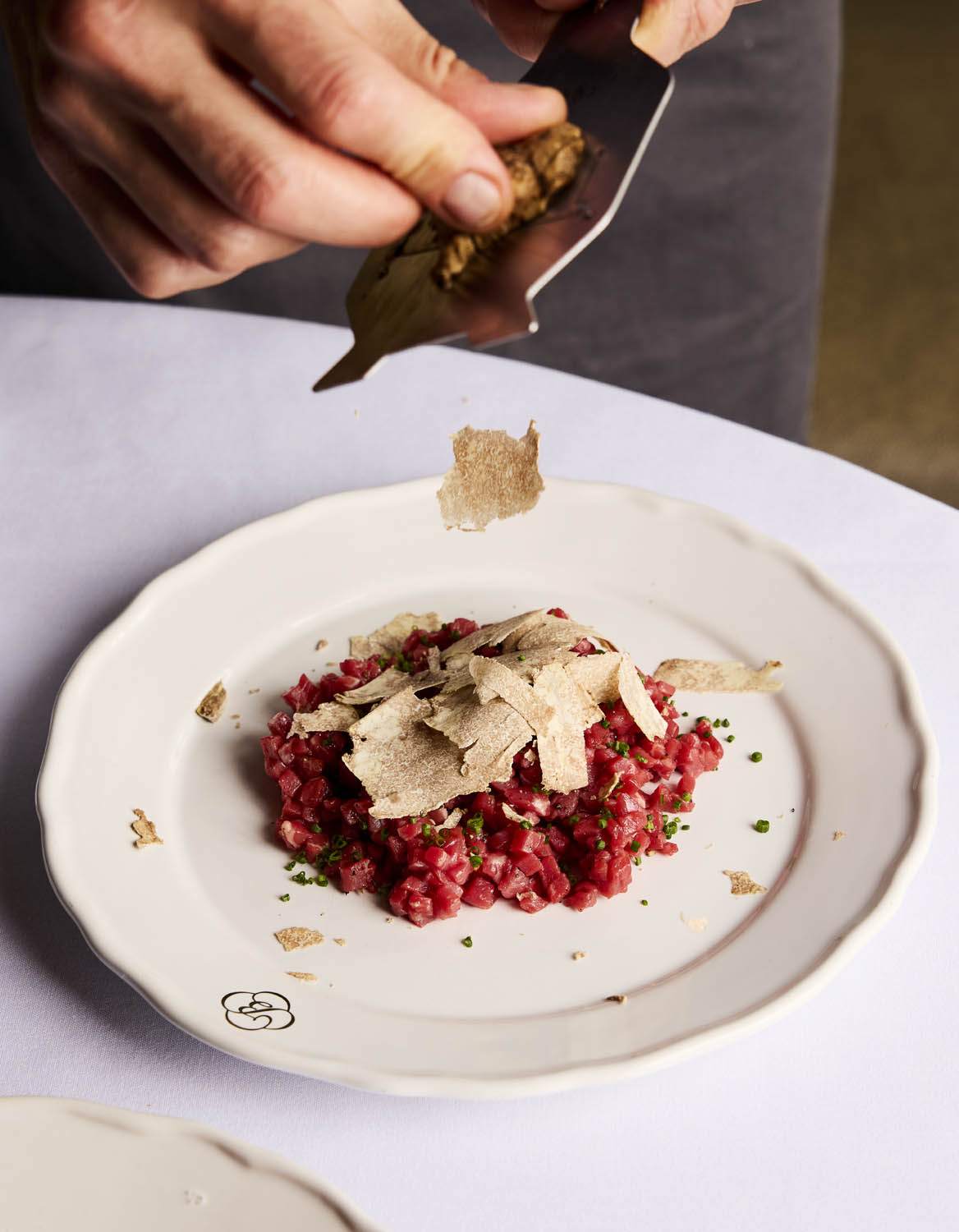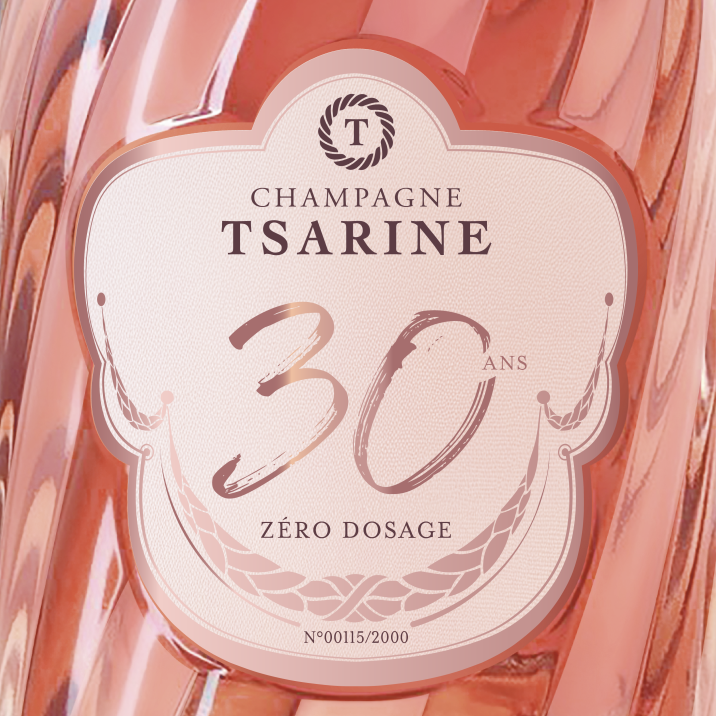Match point: Spirits and food matching
In the 1980s, a typical London restaurant wine list was an exercise in tradition bordering on boredom; a tour of the classic French regions, a German Riesling, and perhaps one or two Italian options, if you were lucky. “But what about a Cosmopolitan to accompany my steak au poivre?” an adventurous epicurean might ask. You would hear a pin drop in the room in the embarrassed and confused silence.
Yet today there is a growing emphasis on challenging the hegemony of wine as the preferred foodmatching option, a development that has gone hand-in-hand with the meteoric rise of casual dining. Indeed, as millennial consumers typically shun more formal experiences in favour of casual dining, restaurateurs and even sommeliers are increasingly open to the possibility that certain dishes may benefit from a spiritbased pairing.
“It’s simply no longer true that wine is the default drink with a meal – certain styles of cuisine obviously pair better with spirit-based cocktails,” says Christine Parkinson, head of wine for the Hakkasan group. “At Yauatcha, we’ve used interesting categories (such as Old Friends, New Friends and Lucky Friends) that pull the wine and other types of drink together – it’s working really well.”
It is in the wake of such developments that white spirits are increasingly finding a welcome home at the restaurant table, although in a fast-changing industry their future is by no means assured. Nevertheless, leading brands understand that a heightened emphasis on the foodfriendly nature of craft white spirits helps the category to stay relevant in a fiercely competitive arena, and are understandably keen to nurture this relationship.
BEAUTIFUL PAIRING
“Our latest joint collaboration was with chef Darren McGrady in New York; he was personal chef to Queen Elizabeth II, Diana, Princess of Wales, and Princes William and Harry for 15 years,” says David Stirling, founder of Scotland’s Arbikie estate. “McGrady loved the quality of Kirsty’s Gin, a seaweed gin inspired by the seven mile beach of Lunan Bay in front of the distillery. It paired beautifully with his seafood dishes.” Tequila Corralejo is another producer calling for greater recognition of the food-friendly nature of white spirits, particularly when used as a base component in cocktails.
“I have always believed that pairing cocktails with food is one of the most creative and most challenging proposals for sommeliers and bartenders – it fuses science and creativity to form a potentially extravagant and exciting pairing,” says David Guzmán, marketing manager of Fraternity Spirits.
Guzmán points out that, like top chefs, mixologists can refine and reinvent their recipes to suit a particular dish, an option clearly not open to sommeliers. “Imagine the infinite possibilities when chefs and mixologists work in harmony, fusing the destinies of the dinner table and cocktail bar,” enthuses Guzmán. Savvy restaurateurs and bartenders clearly share his enthusiasm, and are increasingly championing menus that offer alternatives to the ubiquitous wine pairing.
Hoppers, a popular Sri Lankan restaurant in Soho from the founders of Gymkhana, is one such venue making the most of the alternatives available. “Cocktails belong at the dinner table: they’re a great way to amplify and contrast food in a more literal sense, as you’re literally adding additional ingredients to a dish, whereas wine and beer are slightly more subtle and nuanced,” argues Hoppers’ manager, James Stevenson.
Having recently launched a special cocktail-pairing option for the set menus, Stevenson reports a rapid rise in consumer interest over the past month. “The main advantage in pairing white spirit-based cocktails is having control over all variables of your preferred match and being able to add flavours that may not be found in wine,” he adds. “With wine you can really only control temperature and glassware. With a cocktail you can control its intensity of flavour, acidity, texture and alcohol content to suit your guests’ needs.”
However, this food-matching innovation doesn’t solely revolve around the casual on-trade, and so far it hasn’t reached its apogée. In 2015, Colin Field, head barman of The Ritz Paris, and John Williams, executive chef of The Ritz London, joined forces to create a five-course cocktailpairing menu at the latter venue– a groundbreaking move for such a historic establishment. “I think we will start to see more food and cocktail pairing menus emerge in restaurants,” Field said when the menu launched. “At first John’s dishes featured too many ingredients, which made it very complicated to craft complementary cocktails around them, but when he pared the dishes back it worked.”
Indeed, a growing number of Michelinstarred restaurants are seeing the wisdom of Field’s approach to food matching: Fera at Claridge’s now offers Vestal’s vintage vodka with several dishes, a move spearheaded by chef Simon Rogan before he parted company with the hotel. “Spirit pairing is definitely on the rise and becoming more prominent and visible every day; the cocktail is a vehicle to deliver whichever flavours you require,” agrees Matthew Pomeroy, global director of education and advocacy for Belvedere Vodka. “It can play the lead role and be as enchanting and exciting as any dish, and can also play the supporting role and accompany any dish. The line that once existed between food and drink or the kitchen and the bar has gotten smaller and smaller over the years to the point where it has complete overlapped and become one amazing melting pot of creative space and energy.” Pomeroy underlines the point that
in London’s dynamic and rapidly evolving on-trade, the businesses that are thriving are the ones where food and drink is collaboratively aligned, and menu innovation is both immersive and experimental.
Roman Park, managing director of Ellustria, says: “Certainly in Europe, which was always dominated by great wine producers, food and wine has become intertwined through centuries of mixing. However, now that we live in an ever-changing and connected world, the spread of cultures and ideas will slowly change the landscape of how we perceive food and drink pairings.”
Partner Content
NICHE SEGMENT
Yet Eder Neto, a senior bar manager for the Hakkasan group, argues that this movement to pair food with spirits remains largely driven by a niche segment of the on-trade, while many consumers still regard spirits as inappropriate for matching with food. “We have seen a slight increase in guests having cocktails with their meal at Hakkasan, but not a major increase.
However, at sister site Yauatcha, which is a more casual dinning experience, customers often request cocktails with their meals,” says Neto. “This is key to making the concept work – your audience has to be younger and generally more open-minded. Cocktails have had a bad reputation in the past, as they were often too sweet and inconsistent from establishment to establishment – the majority of guests still believe that cocktails are sweet boozy beverages, and they often don’t want to take a risk because of having had previous disappointments,” he adds.
The point about consumer resistance, and entrenched attitudes towards food-andwine pairing is one that strikes a chord with Corralejo’s Guzmán, even as a staunch champion of the cause. “Historically, wine has dominated the culture of pairing alcohol with food for one simple reason: people are wary of distillates because of their higher alcohol content, and believe they offer an unsuitable or at best an aggressive pairing sensation that overpowers the nuances of the dish,” he says.
In addition, there is also the question of regionality to consider – London clearly leads the UK in food-and-drink trends, while more conservative attitudes still prevail across the country. “In major cities outside of London, you’re unlikely to see an emphasis on pairing spirits and cocktails with food – it’s simply not what the majority of people expect, and moving consumers outside of their comfort zone requires significant time and effort,” observes Joss Roussane, former sommelier, now food and beverage manager at The Manor House in The Cotswolds.
But for every naysayer, there is a trendsetter determined to break down consumer prejudices about the viability of pairing spirits with food. In July, Ryan Chetiyawardana and Doug McMaster opened Cub in London’s Hoxton, a landmark venue that gives food and drink equal weighting and treats them as a united entity, to blur the boundaries and bring the worlds of food and drink closer together. “At Cub we’re looking to start a new conversation about the place of spirits in our dining culture and how they can be enjoyed alongside dishes but not necessarily paired together,” says operations manager Robin Honhold.
“Spirits have often been overlooked when dining; we’ve been looking at how we can overcome this through the ingredients used so they balance against the food well to create an ongoing journey of dishes and drinks. I believe that if we look at what has been served traditionally, then a cocktail can be created to suit that specific dish if it remains culturally relevant to the ingredients being used.”
CHANGE IN ATTITUDE
David Stirling of Arbikie adds. “There is clearly a significant move towards food pairings with white spirits. This change in attitude may well go even further and actually have an impact on the overall diet of the UK,” he says.
Nevertheless, wine is in no danger of being usurped – Fera at Claridge’s boasts an expansive wine list that still takes centre stage, despite the restaurant’s willingness to offer consumers exciting alternatives.
Neto of Hakkasan says: “Wine has long dominated the culture of pairing alcohol with food for a good reason: wine flavours are inherently food-friendly and the relatively low alcohol level makes it a perfect choice for food.” But the movement to embrace cocktails and spirits at the dinner table is on the rise, adding creativity and excitement to London’s dynamic on-trade.
“With the rise of the cocktail bar scene and the cult of the bartender, we will see more and more drinks designed to work with food and I see a future where it will probably be 50/50,” Neto adds.
For white spirit brands that are promoting the ideas of provenance and food-matching versatility, the timing couldn’t be better.





The has been a growing trend be it spirits or cocktails and food pairings.